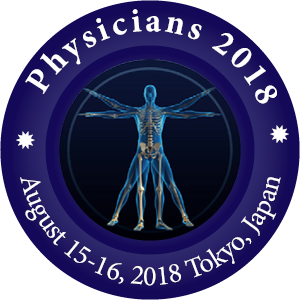
Geetha Kayambu
National University Hospital, Singapore
Title: Can Early Physical Rehabilitation Modulate Underlying Pathological Mechanisms in Critical Illness?
Biography
Biography: Geetha Kayambu
Abstract
Critical care management is multi focal which can confound into multiple pathology requiring multiple pathways of recovery. An estimated 2% to 11% of critically ill patients require prolonged stays in the ICU accounting for 25-45% of total ICU days. Acute muscle wasting is directly correlated with systemic inflammation during critical illness and patients with multi-organ failure can suffer muscle loss of more than 15% by the end of the first week of ICU admission. In addition, oxidative stress caused during the disease process is an atrophic stimulus in unloaded muscle that promotes atrophy by modifying redox-sensitive processes in the muscle fibres. Preservation of muscle mass should focus on anabolic restoration through early physical rehabilitation strategies however anabolic and catabolic pathways have not been explored in detail up to date. Through targeted exercise, the prevention of excessive release of pro-inflammatory cytokines, and activation of proteolytic pathways leading to limitation of free-radical generation may inhibit the catabolic skeletal muscle changes in severe critical illness. Progressive physical activity may also reduce resting CRP levels through multiple mechanisms, causing a decrease in cytokine production and possibly impose an antioxidant effect. Different exercise protocols can result in varying levels of ROS production, as oxidative damage can be both intensity and duration dependent. However, the oxidative stress responses of early physical rehabilitation during disease states have yet to be explored. Objective: The overall aim is to evaluate the capacity of early exercise to modulate pathological outcomes during critical illness. Theoretical Orientation: It is hypothesized that early exercise alters underlying pathological mechanisms of critical illness; inflammation, illness severity, microcirculation and oxidative processes affecting muscle architecture. Findings: Preliminary evidence suggests that early exercise can modify fat free muscle mass and inflammatory biomarkers in critically ill patients. Conclusion & Significance: The physiological reasons for improvement or adverse effects on underlying pathology of critical illness with early exercise require further investigations.

